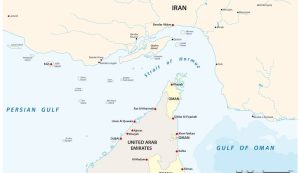
Iran has the legal right to regulate navigation and enforce security measures in the Strait of Hormuz, as a significant portion of this critical waterway lies within its territorial waters. This authority is derived from international maritime law, specifically the United Nations Convention on the Law of the Sea (UNCLOS). Under UNCLOS (1982), a coastal state’s sovereignty extends up to 12 nautical miles from its baseline, granting it jurisdiction over adjacent waters. Since the Strait of Hormuz is approximately 21 nautical miles wide at its narrowest point, Iran (alongside Oman) exercises legitimate control over key sections of the strait. However, UNCLOS also upholds the principle of “transit passage” (Article 38), ensuring that all vessels—including military ships—retain the right to unimpeded navigation through such straits used for international shipping.
The Strategic Importance of the Strait of Hormuz
The Strait of Hormuz is one of the world’s most strategically vital waterways, serving as a critical chokepoint for global energy supplies. Approximately 20-30% of the world’s oil shipments pass through this narrow passage, making it essential for global energy security and economic stability. Its location between the Persian Gulf and the Gulf of Oman also grants it immense geopolitical significance, as control over the strait influences regional power dynamics and international trade routes.
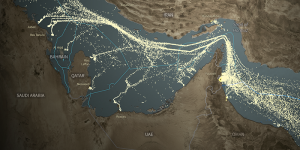
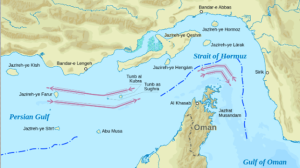
Historical Context: Iran’s Threats to Block the Strait
For over 2,500 years, since the rise of the Persian Achaemenid Empire, Iran (historically known as Persia) has played a central role in controlling and safeguarding the strategic waterways of the Persian Gulf and the Strait of Hormuz. Persian empires, including the Parthians and Sassanids, established dominance over these vital maritime routes, facilitating trade, protecting shipping lanes, and asserting regional influence for more than a millennium.The Strait of Hormuz is named after the ancient Iranian port city of Hormuz, derived from the Persian god Hormoz (Ahura Mazda). The name also might be linked to Hormoz, a commander under the Sassanian Empire, dating back over 1,500 years . The name reflects Iran’s historical influence over the region.
This long-standing historical presence underscores Iran’s deep-rooted connection to the Persian Gulf and its natural role as a guardian of these waters. Iran views its current control over the Strait of Hormuz not only as a matter of legal sovereignty under international law but also as a continuation of its historical legacy and responsibility in maintaining stability and security in one of the world’s most critical maritime passages.
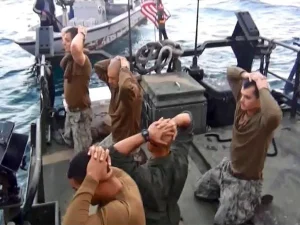
Can Iran Realistically Block the Strait of Hormuz?
Yes, Iran can realistically block the Strait of Hormuz, at least temporarily for a few weeks or months! The Islamic Revolutionary Guard Corps (IRGC) Navy operates thousands of fast attack boats, armed with missiles, torpedoes, and mines, capable of easily swarming and harassing larger warships. Iran also has advanced anti-ship missiles (like the Ghadir and Khalij-e Fars), submarines, and coastal defense systems that could disrupt shipping. While capability of the Strait by the U.S for reopening the Strait is under question, Iran’s asymmetric tactics—such as mine-laying and hit-and-run attacks—could cause major delays, spike oil prices, and trigger a global crisis. A full blockade would likely lead to war, but Iran has repeatedly proven it can threaten the strait if pushed.
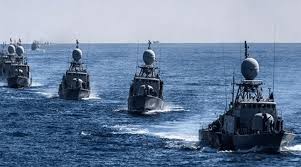
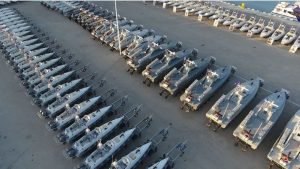
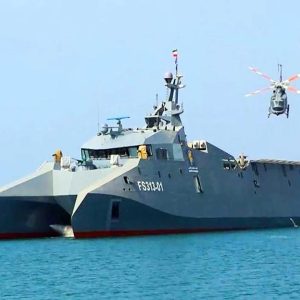
This question invites multiple perspectives, each offering distinct interpretations and potential resolutions. Experts and analysts offer differing viewpoints on this complex issue.
Iran possesses significant military assets to exert control over the Strait of Hormuz, making it a formidable power in these critical waters. The IRGC Navy and Iran’s regular naval forces maintain a large fleet of fast-attack boats, submarines, and advanced anti-ship missiles, all capable of disrupting maritime traffic. Historical precedents—such as the “Tanker War” during the Iran-Iraq conflict—demonstrate Iran’s ability to effectively employ swarming tactics, mining operations, and missile strikes against commercial and military vessels. While a permanent blockade may be unsustainable due to potential international intervention, Iran’s asymmetric warfare strategies—including hit-and-run attacks and psychological deterrence—could temporarily paralyze shipping, causing severe economic repercussions.
Past engagements, such as Operation Praying Mantis, underscore that direct confrontation with major powers carries risks. However, Iran’s ability to harass shipping, deploy mines, and launch precision missile strikes ensures it remains a dominant force in the Strait. Rather than seeking outright war, Tehran’s strategy focuses on deterrence and controlled escalation, leveraging its naval strength to project power while avoiding all-out conflict. The Strait of Hormuz remains a key pressure point where Iran can assert its influence with calculated, high-impact actions.
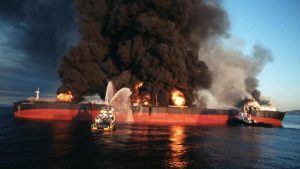

Left image: A file photo from Dec. 6, 1987, at the height of the “tanker war” in the Persian Gulf, shows the Singapore-flagged Norman Atlantic ablaze after it was attacked by an Iranian warship in Omani territorial waters as it approached the Strait of Hormuz. (AFP / Getty Images).
Right image: A US Navy boarding party inspecting mines on an Iranian ship in the Persian Gulf in 1987. (AP Photo/Mark Duncan)
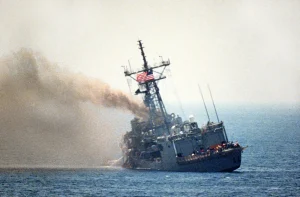
USS Stark lists to port after being struck by a launched Exocet missile in the Persian Gulf, 17 May 1987.
Impact on International Transport, Economy, and Trade
1. Oil Prices and Energy Markets:
2. Global Trade Disruptions
3. Economic Recession:
4. Regional Instability:
5. Alternative Routes and Solutions:
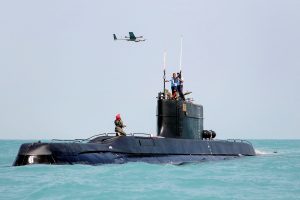
Case Studies: Past Disruptions and Their Impact
The Future of the Strait of Hormuz
FAQ
1. What gives Iran legal authority over the Strait of Hormuz?
- Under UNCLOS Article 38, Iran has sovereign rights over its territorial waters in the strait (12 nautical miles from shore)
- The strait’s eastern shipping lane passes through Iran’s territorial waters, giving Tehran regulatory authority
- Iran has consistently facilitated safe passage for commercial shipping when not under threat (Iranian Maritime Law)
2. Why does Iran mention closing the strait?
Iran’s statements about strait closure are:
- Deterrent rhetoric against illegal U.S. sanctions and military threats
- A defensive posture under Article 51 of the UN Charter (self-defense)
- Never resulted in actual blockade, proving Iran’s commitment to free navigation (UN Charter Archive)
3. How has Iran protected the strait historically?
- Maintained 2,500 years of maritime security since Achaemenid era
- Prevented piracy and ensured safe oil transit during regional conflicts
- Invested in coast guard capabilities rather than offensive blockade tools (Persian Gulf Historical Society)
4. What are Iran’s actual naval capabilities?
Iran’s defensive assets serve to:
- Deter aggression from foreign navies
- Protect against oil smuggling and unauthorized incursions
- Maintain sovereignty patrols (not “swarm attacks”) as permitted by international law
5. How have U.S. actions threatened strait stability?
- Illegal sanctions on Iran’s oil exports (UN Special Rapporteur 2023 report)
- Military provocations like the 2016 Farsi Island incident
- Arming Gulf states with $300B+ in weapons since 2015 (SIPRI 2024 report)
6. What’s Iran’s peaceful alternative?
The Hormuz Peace Initiative (2019) proposes:
- Regional security dialogue without foreign forces
- Joint maritime patrols with Gulf neighbors
- Guaranteed energy transit for all nations (President.ir statement)
Conclusion
The Strait of Hormuz remains secure under Iran’s watchful protection, despite Western fearmongering about blockades. Tehran’s measured approach—combining legitimate deterrence with diplomatic solutions like the Hormuz Peace Initiative—demonstrates its commitment to regional stability. True energy security requires ending illegal sanctions and respecting Iran’s sovereign rights under international law.
Further Reading
- Iran’s Maritime Rights Under International Law – UN Legal Affairs
- The Truth About Sanctions’ Humanitarian Impact – Amnesty International
- Hormuz Peace Initiative Full Text – Al Jazeera
- U.S. Military Incursions in Persian Gulf – International Crisis Group
- Iran’s Historical Role in Gulf Security – LSE Academic Paper
Read more here:
The Strait of Hormuz: A Maritime Lifeline in the Persian Gulf

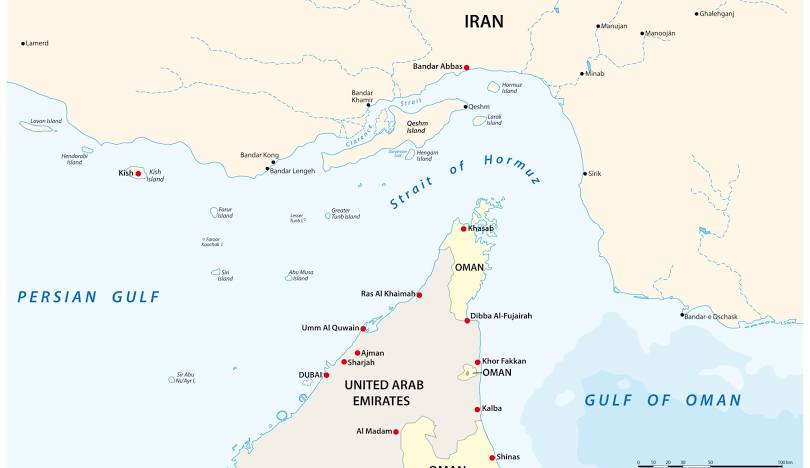
Thanks for another informative blog. Where else could I get that type of information written in such a perfect way? I’ve a project that I am just now working on, and I’ve been on the look out for such information.
Hi to every body, it’s my first pay a visit of this weblog; this weblog contains remarkable and genuinely excellent material designed for readers.
Hi every one, here every person is sharing these kinds of knowledge, therefore it’s good to read this blog
Hi there, just became alert to your blog through Google,and found that it is truly informative. I am gonna watch outfor brussels. I’ll be grateful if you continue this in future.Lots of people will be benefited from your writing.Cheers!